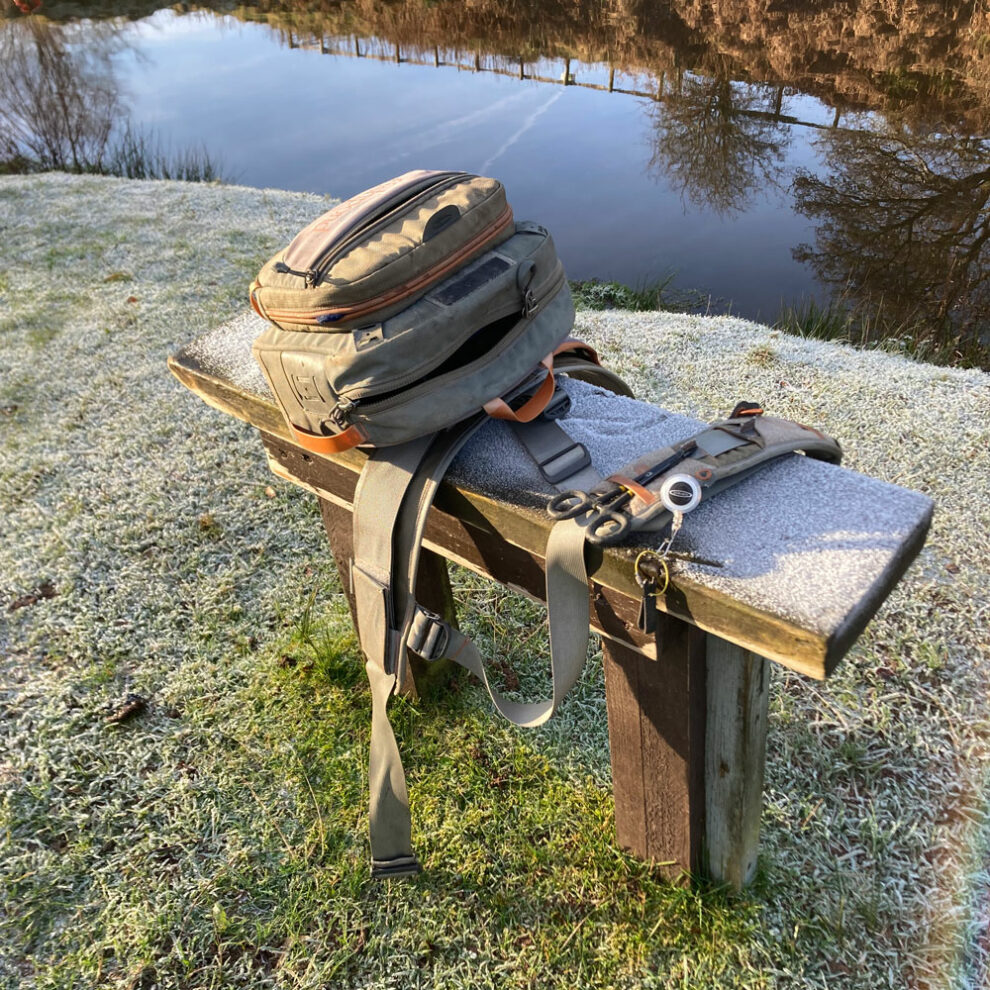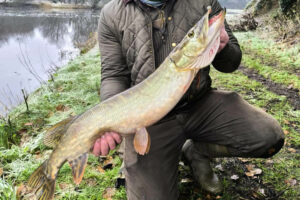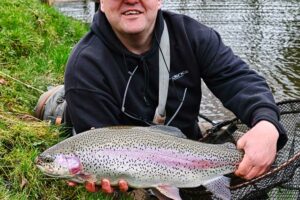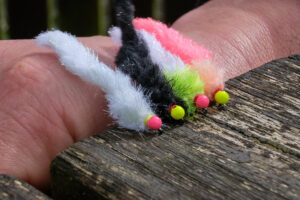The odds and sods will you need as a Beginner to Fly Fishing. It is not just rods and reels. In the First Part, we looked at the absolute must-buy items for your first trip. In the Second Part, we look at the items that are almost essential once you decide you want to do it properly.
Braided Loops
£0 to start with. £0 for life if you decide against. £9 (for 3 loops)
You won’t need these to start with if you have a welded loop on the business end of the fly line, but it will eventually wear out over a few months. Braided loops are the replacements. You will also need some superglue and some patience. Watch how to do it on YouTube and fit it at home. You will have to pre-empt the welded loop going, but that’s better than it breaking during a fishing trip and replacing it on the bank after a fish has broken it.
Buy the smallest braided loops you can. Vision Nano Loops or Roman Moser Minicons are neat and tidy and will give you the best presentation. Bulkier loops can catch the wind too easily, smash on the surface quite hard and can cause bad presentation overall.
The welded loop will last a lot longer if you use loop to loop connections, by the way, but that’s another knot and technique to learn later. Stick with uni knotting your leader material to the loop for now.
It is possible not to buy braided loops at all and use a nail knot, but we are getting too complex too soon here. A few braided loops are handy to have regardless.
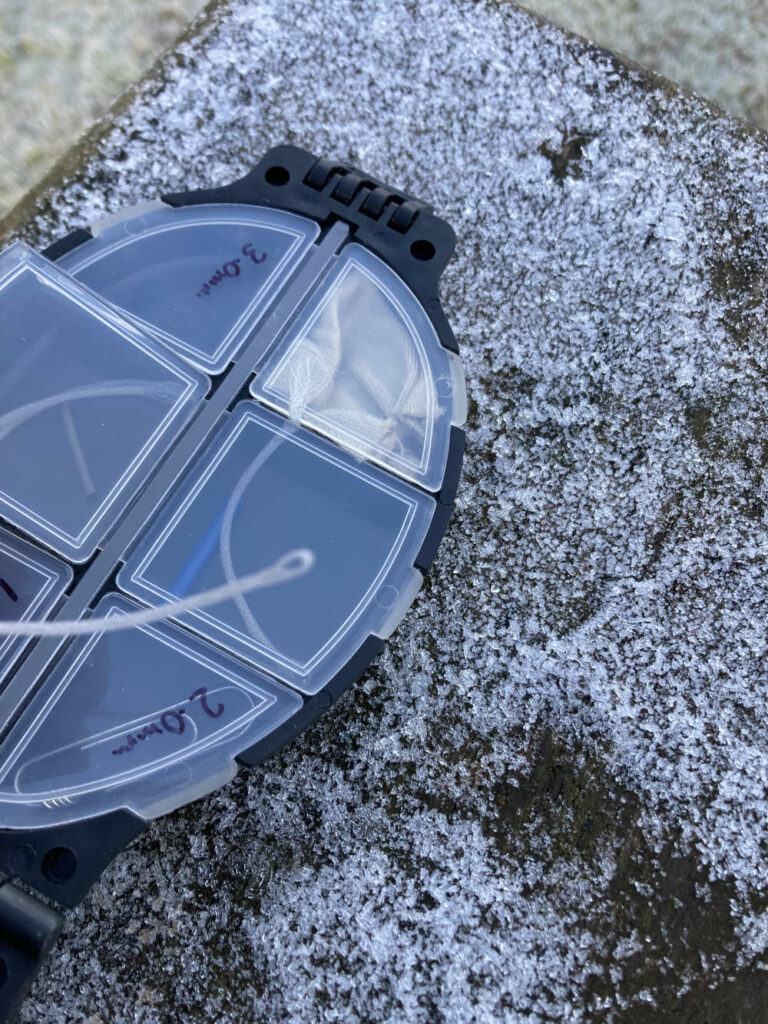
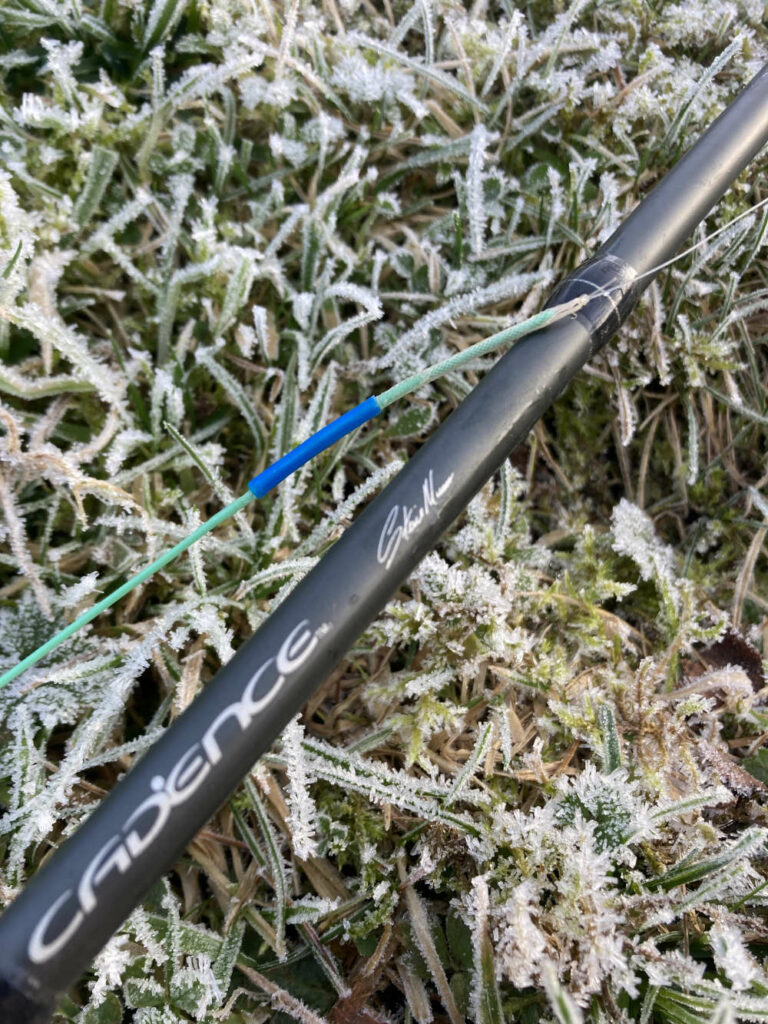
Fly box
£0 for your first trip. £5 per box thereafter.
For your first trip, you can probably save buying a fly box and just use the plastic bags your flies were most likely supplied in. You won’t be changing flies too much on your first trip or two.
But when you do decide to go and take up fly-fishing properly, you will collect more and more must have flies, and you will need something to put them in.
And you can spend anything on a fly box. I have accumulated a fair old collection over the years, and it may surprise you to know the ones I have in the bag at all times are the cheapest, most basic boxes of all. In fact, I think the one used most was given away free with a magazine. It would probably be worth about £1.
The more expensive ones are sat at home collecting dust and come under the rash purchase heading. Some people love them and honestly, it’s a personal preference thing you will work out in time.
If you want to buy a first fly box, I’d recommend a thing called a Fox Box. A basic but well thought out box that has stood the test of time and remains unchanged to this day. You won’t go far wrong with one of these.
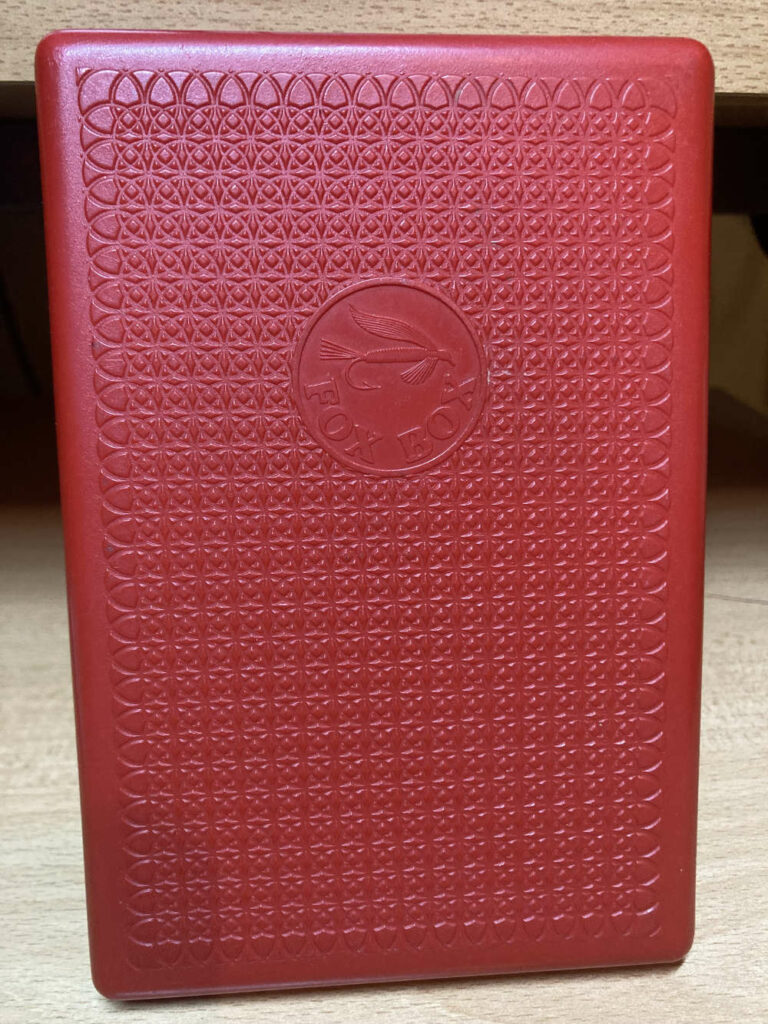
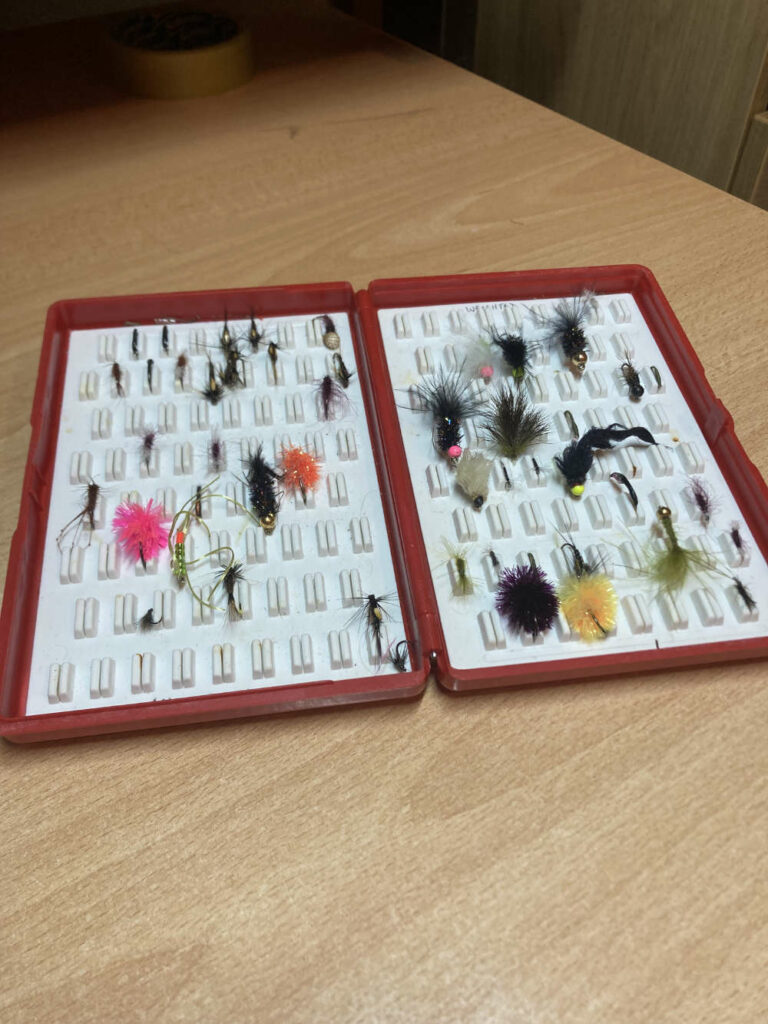
Your main considerations when picking the right box are weight, size, and accessibility.
The lighter, the better for me personally. And small enough to fit in a pocket.
But really and truly, everyone will have different ideas on this, so just feel your way in over a few months. You can never have enough fly boxes, so they will get used at some point.
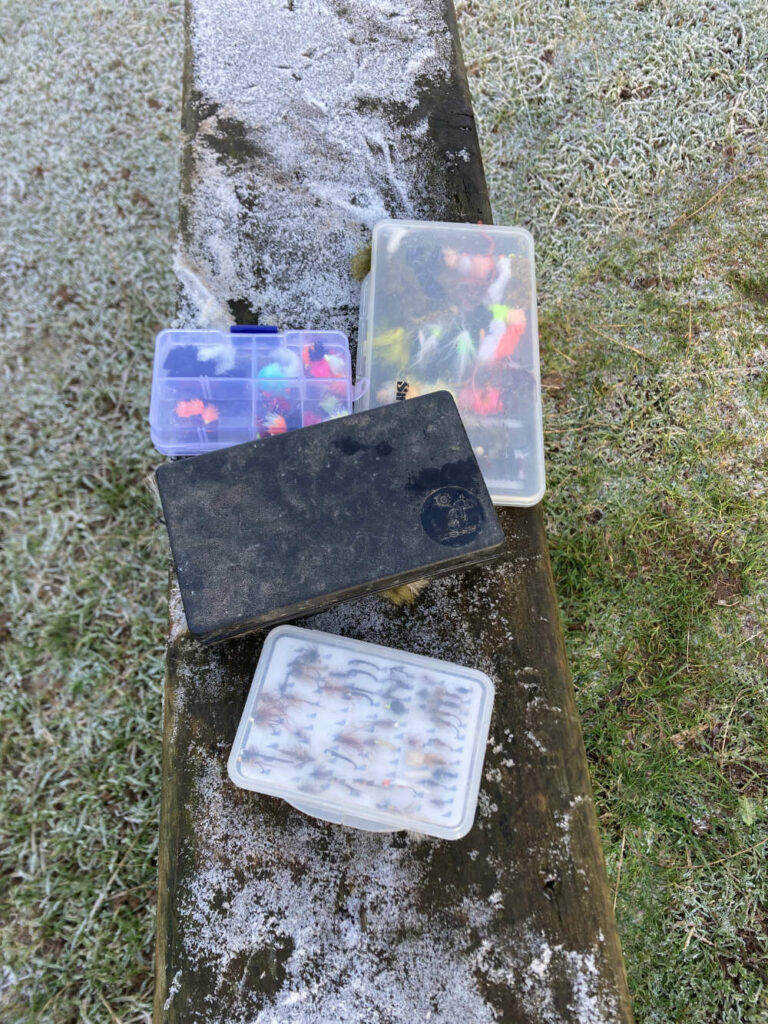
Floatant
£0 for your first trip. £6 for two years when going full time.
Probably not necessary for your first trip.
Floatant is something you would dab on a fly if you want it to float on top of the water. Also known as dry fly-fishing.
If you’ve ever seen the rings of fish rising on a lake, these will very often be trout feeding on water dwelling insects that have come to the surface to hatch into winged adults. This would be the time you would fish a dry fly. It’s the whole hilltop flagpole that fly-fishing is based around in truth.
The best times for this are a spring day in April/May or a late summer evening near dark. You would tend not to fish a dry fly in winter.
There are many types of floatant on the market, most of which I haven’t used, and there are slightly different jobs each one can do. To start off with, I’d happily go with the old-fashioned Gherkes Gink for most dry fly-fishing. And the key with applying floatant is that less is more.
Don’t smear the fly in the stuff. Just gently dab some on key parts of the fly with your fingertip.
As already said, to start off with, just avoid dry fly-fishing to keep things as simple as possible.
It is unavoidable you will need floatant and dry flies at some point, though.
Sinkant
£0 for your first trip. £6 when going full time.
Very similar remarks to floatant. It is a non-essential for your first couple of trips, but is a good addition once you’ve bedded in.
The job of a sinkant is supposedly to sink your leader, which is sometimes necessary as floating leader material can scare the fish (I never said this was going to get simple).
Sinkant could also potentially dull down shiny leader material, whose glinting could scare fish on a sunny day.
If you don’t have sinkant, there is a handy back-up under your feet at most fisheries — mud.
Just pick a chunk of bankside mud and rub it down the line to do a similar job. Albeit not quite as good as the shop bought version.
If you are the type who likes to make your own stuff, sinkant is one of those things you can make easily. For the price of one shop — bought tub, you can buy all the ingredients that will keep you and your friends in sinkant for ten lifetimes.
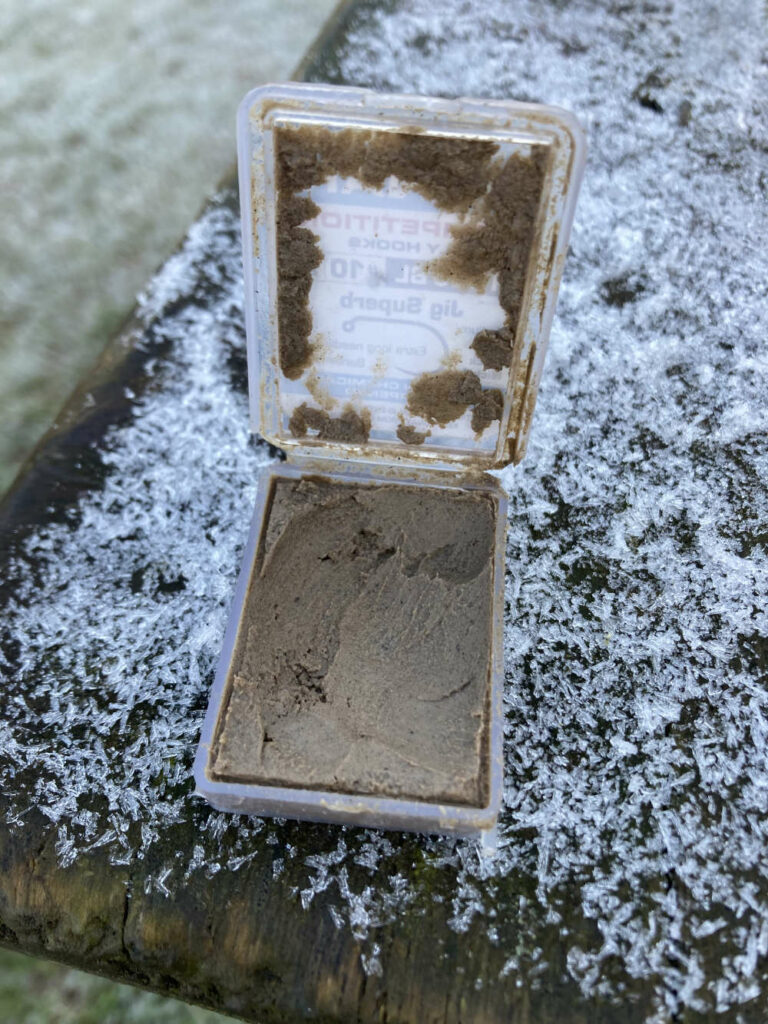
Indicators
£6 for a basic pack.
Some people aren’t keen on using indicators in fly-fishing. They think it’s cheating as you are using a small floating device to suspend a fly below. Which then fishes by itself without much interaction from the angler — until it goes under.
Indicators are a fantastic way of starting off, though. You have visual confirmation a fish has taken your fly. And one of the hardest things for beginners is identifying the moment a fish has taken the fly. There are several ways.
Absolute truth be told, the indicator is your best chance of catching in the early stages. I would highly recommend buying some for your first attempt. To the point, I would almost say it should go in Part 1 of non negotiables.
And don’t go onto a small water thinking you’re going to get booed off. The vast majority of folk will have indicators on their person. And it’s an accepted way of fishing on most of these places. In fact, I’d say it’s the most popular method.
To understand why you would have more chance as a beginner using an indicator (also known as a bung), you first have to understand the general principle of fly-fishing.
Namely, that we cast a line out with a fly on the end to make the fish believe it is a real food item — and then eat it.
Every so often, we cast this fly and retrieve it back towards us in a bid to make the fish chase the fly and grab it. Pretty much because it thinks the meal is getting away.
And by its nature, retrieving the fly means you will be casting hundreds of times a day as the fly will always end up back at your feet and need redistributing.
The problem with casting is it is the hardest part of fly-fishing and the thing you will spend the most time perfecting.
It can be soul-destroying when you see everyone else catching fish around you, and you’re standing like a lion tamer, unable to get the fly more than five yards out. It is the hardest part of learning, but we have all been there, so ignore the thoughts in your head that everyone is laughing at you. The likelihood is they are itching to help, so go and have a word.
If you use an indicator, you reduce the need to cast anywhere near as much, as you will leave the set-up to drift around with the current. You are not continually pulling the fly back to your feet.
Obviously, it could be argued that by casting hundreds of times, you will learn quicker. But here’s the problem — if you don’t catch anything early on, you risk getting disillusioned immediately.
There are very few beginners I have taught who are fascinated by casting mechanics when other people are catching fish.
Give yourself some excitement first, and you’ll naturally start to ask questions and move very naturally onto the other methods when you want to understand them more. For the simple reason, they will make a bit more sense to you over time.
If you’ve sickened yourself of casting you won’t last long enough to wonder.
In terms of which indicators to buy I design and make my own so don’t really use shop bought ones. I believe the Airlok Strike Indicators do a decent job. And also the type that have a silicone tube running through them work fairly well. You can even get dough you mould onto the line that floats, but my experience of that is limited.
Either way, if you fish a fly about 2ft to 6ft under the bung, you’ll be in the game. I’d suggest a very basic egg fly with a tungsten bead to use for this method. Add this to your shopping list of flies.
As an addition, takes will be the bung disappearing. You won’t feel the fish. Which means you will need to strike hard the second it vanishes.
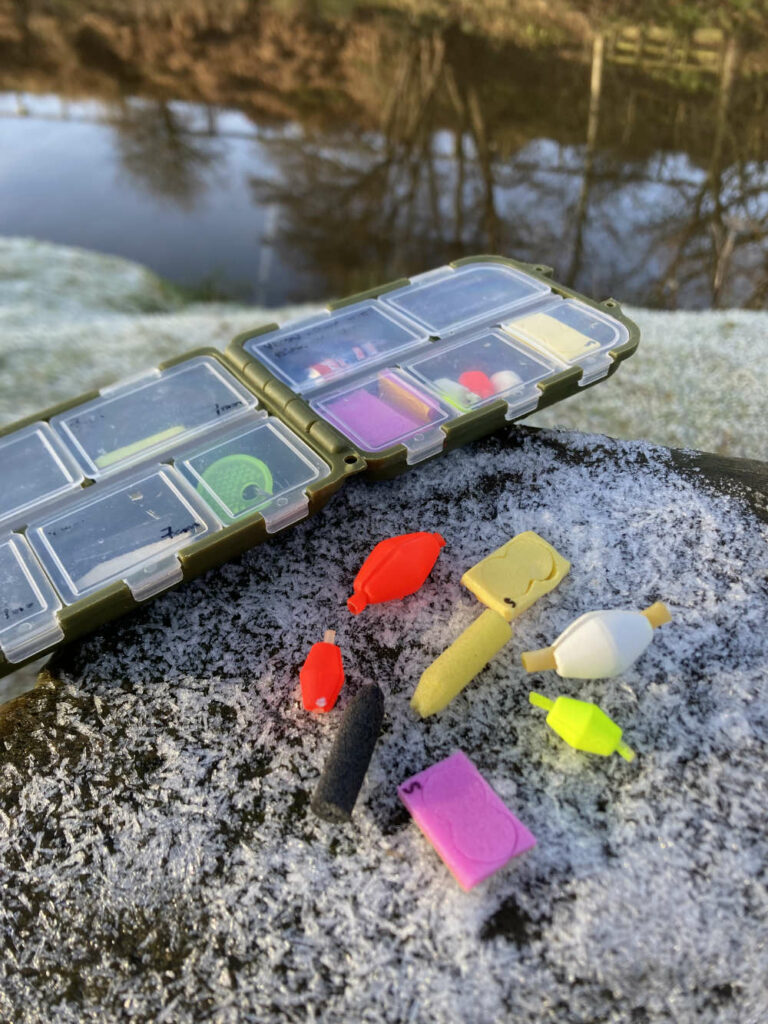
Hook sharpener
£0 for your first time. £8 for life thereafter.
No need for your first couple of trips. But will be needed if you decide fly-fishing is for you.
With all the casting and abuse you will be giving your leader and fly, it is inevitable you will damage the point of the hook. And the first you may realise of this is when you keep ‘bumping’ fish. Which is when you strike, feel the fish for a fraction of a second, and it’s gone.
And a damaged hook can be very subtle. It is unlikely you will see anything visually. So every now and then, rub the underside of the hook. You’ll feel a damaged one, no problem.
If it is damaged, give it a rub with your sharpener to make it ship shape again.
It’s probably the most common mistake every angler makes. Not just beginners. Make sure your hooks are sharp, or you’re wasting your time.
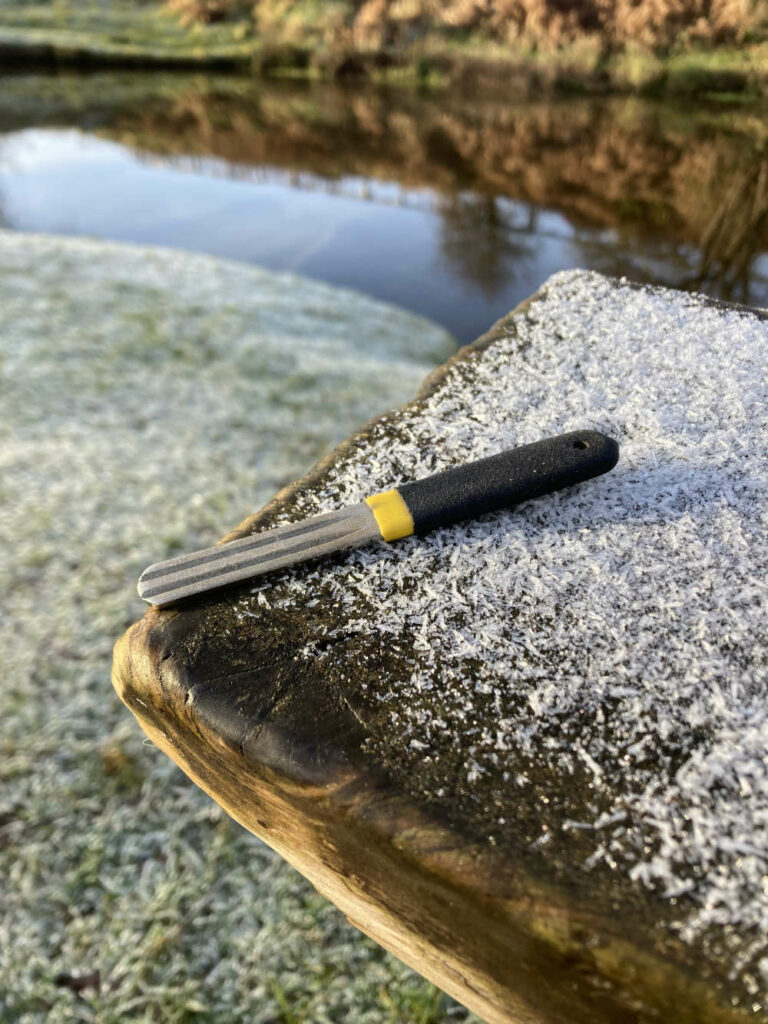
Snips/Nippers
£0 for your first trip. £2 to £60 when going full time.
This is a tool that would come under your most regularly used items. You want it to hand immediately, and they are used for trimming the excess line that sticks out after tying a knot.
For your first trip or two you don’t have to buy any as you can technically use your teeth or scissors.
But they can cost buttons, and you will use them 20 or 30 times a day and save wearing your teeth out.
The best all round snips I have used are the basic Loon ones for about £10. These also have a small point hidden away on them for pushing varnish out of fly eyes.
But you can buy snips for £2 that will work absolutely brilliantly. I’d recommend just getting these. A tackle shop’s own brand, pretty much.
It is true that scissors do the same job, but nippers are far less fiddly and easier to store and access without having to go in and out of pockets.
Such things exist, where you can spend an absolute fortune on ceramic nippers. My experience of these is I’d rather not bother. I’m not even sure how ceramics are better. Perhaps they stay sharper longer? Either way, I would rather buy 6 sets of cheapies over a lifetime at £2 to £10 each than one pair at £60.
It is also worth factoring in that this is an item you can lose fairly easily. Bargain-basement is best, therefore.
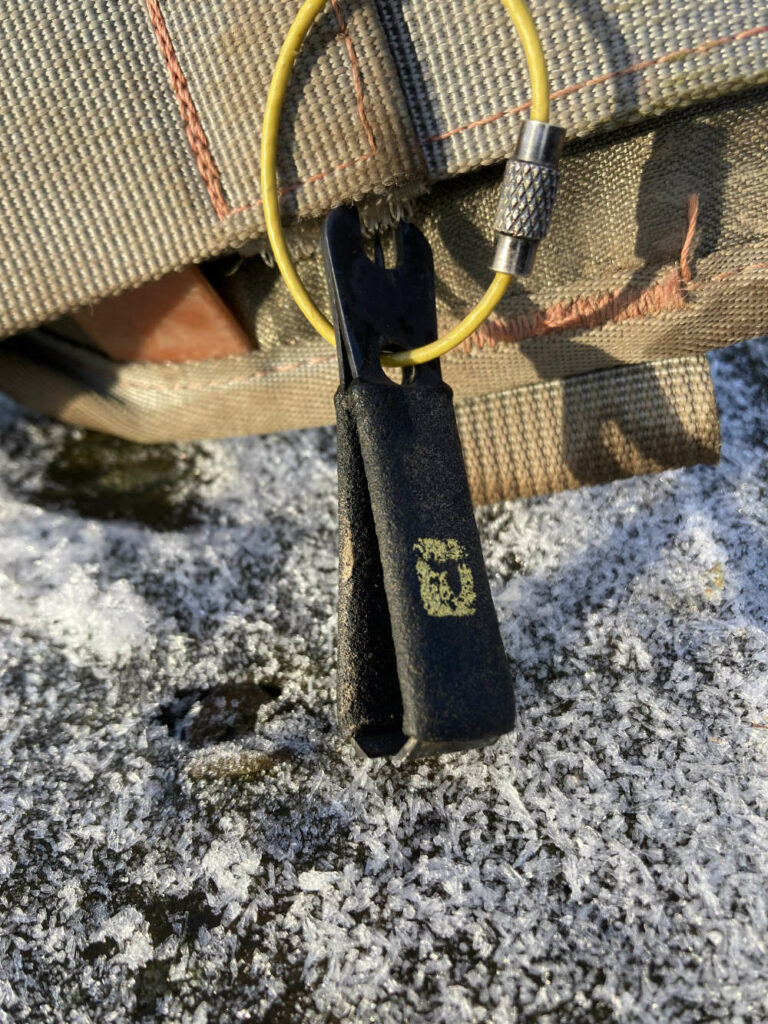
Zingers/Lanyard
£0 for your first trip. £6 when going full time (you may need a couple).
Certainly, not essential on your first few trips, but a long term must have if you take fly-fishing up full time.
The zinger — or retractor — is pinned to your shirt and allows you to attach regularly used tools, such as nippers or forceps.
When not in use, the tool stays close to the zinger, but when required, it will easily pull out a few feet and automatically retract when the job is complete.
As with everything, the variation in price is large and, once again, the most basic version is probably the best buy on balance.
I have had £20 versions and £5 cheapies and can’t say there is much difference. So I just buy a standard own brand tackle shop version.
Something I’ve found with retractors is that all versions have a limited lifespan. None of them are mega reliable, and eventually the mechanism will go, and you’ll just be left with nippers dangling a few feet and getting in the way. So it might be worth buying two or three so you have back up.
There is a good argument for attaching forceps to a zinger, as loose forceps can accidentally be left lying on the ground and forgotten about. By attaching them to a retractor, you can’t lose them.
The most common thing to attach is nippers, though. And most fishermen will have a couple of zingers jangling around on their person.
An alternative to a zinger is a lanyard — or pretty much a tool necklace. The plus point of this is it won’t break and is very straightforward.
Either way, having things close to hand and easily accessible makes you much more efficient.
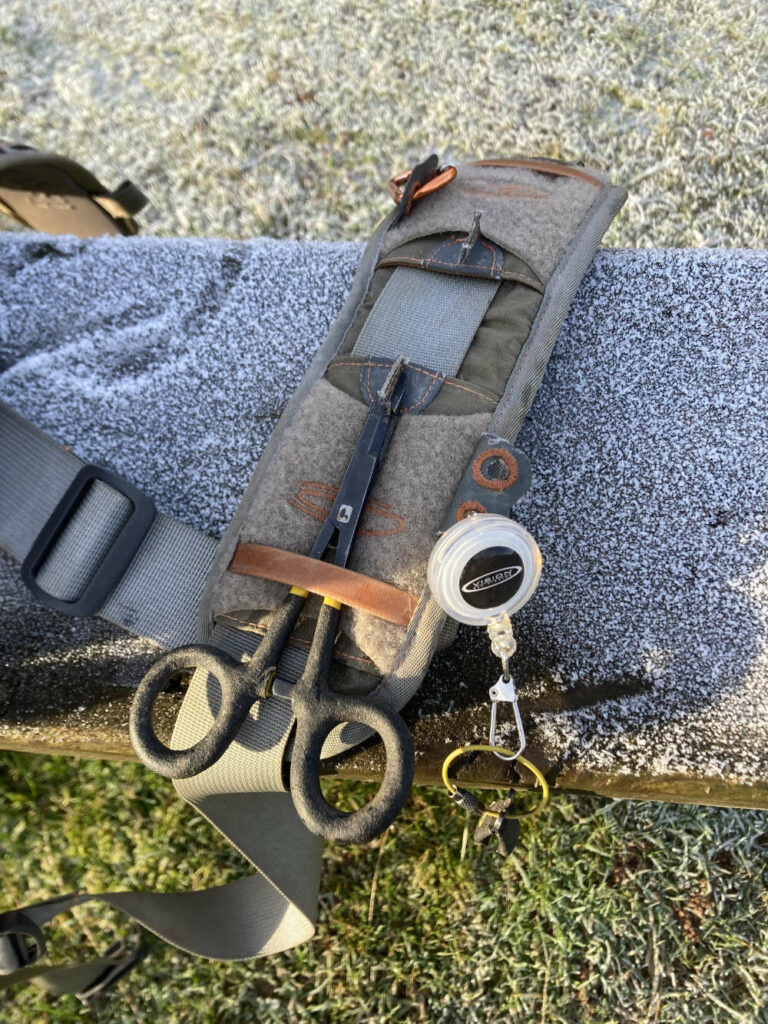
Priest
£0 or £5 on your first trip. £5 for life.
This is the item you kill the fish with. A necessary evil if you want to take some home to eat.
It is also a non-negotiable if you intend to take a fish home on your first trip, so add this to Part 1 if you are.
In summary, end it quickly. Do not fanny around. Be decisive and DO NOT gently tap. One firm hit should do it. A second very soon after, just in case.
We will go through this process in more detail in the next Beginners Series Blog, where we will explain all the things you need to know to prepare yourself for your first day. The things that are mentioned infrequently, but catch most new-starters out.
It is easy to focus on tackle requirements, but what is expected of you? Where on earth do you start fishing? How do you buy your ticket? How do you handle fish and so on.
But for now, a Priest should not cost a fortune and a fiver will see you OK for life. Unless you lose it. Priests tend to get left lying on the bank and forgotten about.
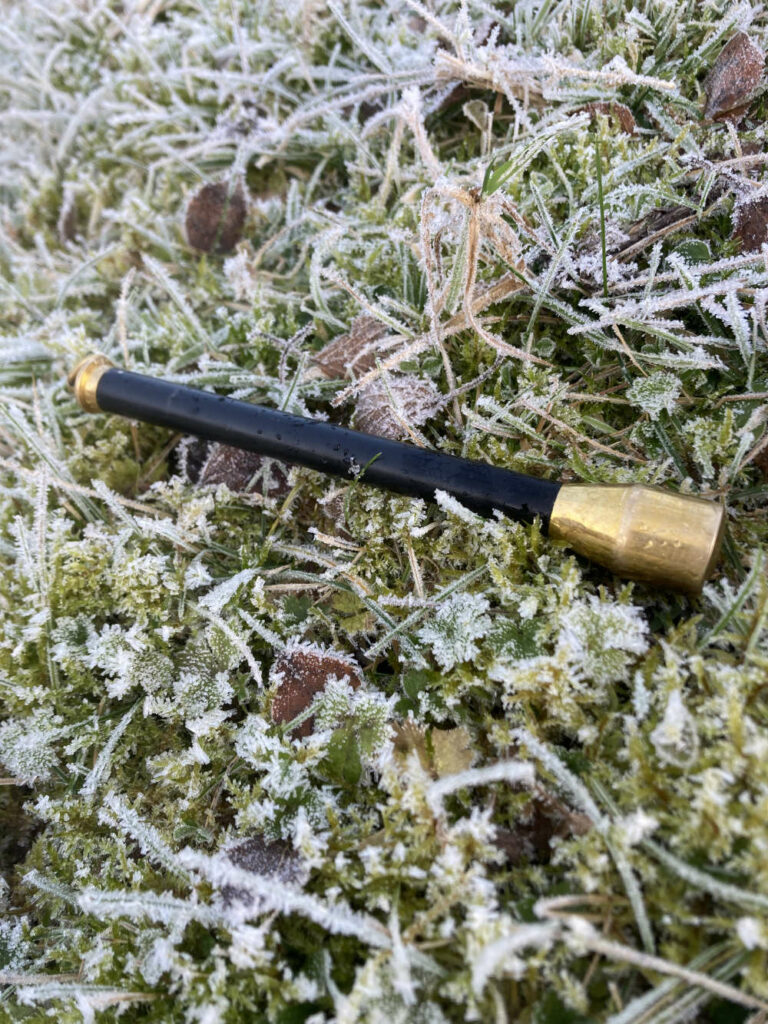
Wellies/Coat
£0 for your first trip. Unlimited if you go full time.
I will assume you already have a waterproof coat for day to day wear. This will do for your first trip out. It might not be necessary on many days, but no-one’s going to be bothered if you pull out a non fishing jacket on day one if the heavens open.
And you certainly do not need me to tell you why you need one.
All I need to add to this is there are dedicated fishing jackets that will help with your efficiency on the bank over the long term. As with any specialised pursuit, a few adjustments make a big difference from a non-fishing coat.
Hood design, built in hanger rings, pocket position and pocket type are just a few.
You would definitely benefit from getting a dedicated coat in time, but do not bother to start with, as they can be costly.
It is a similar story with footwear. Be sensible and take into account fishing lakes are potentially surrounded by mud or wet grass. I know I am stating the obvious here, but you would be surprised how many folk turn up in their Ralph Lauren summer collection in October.
A minimum of walking boots for your first trip if it has been raining in the days leading up. Ideally wellies.
If it has been dry for days beforehand, then obviously basic trainers or shoes are possible. But certainly do not discount the ability of wet feet to thoroughly ruin your day – especially in winter.
Just use common sense. And consider the weather in the days leading up to your trip. It might be sunshine and blue skies when you go, but if it has been a monsoon for a few days previous, the ground will still be wet.
We have done a more detailed blog on what to wear tips, which you can see here.
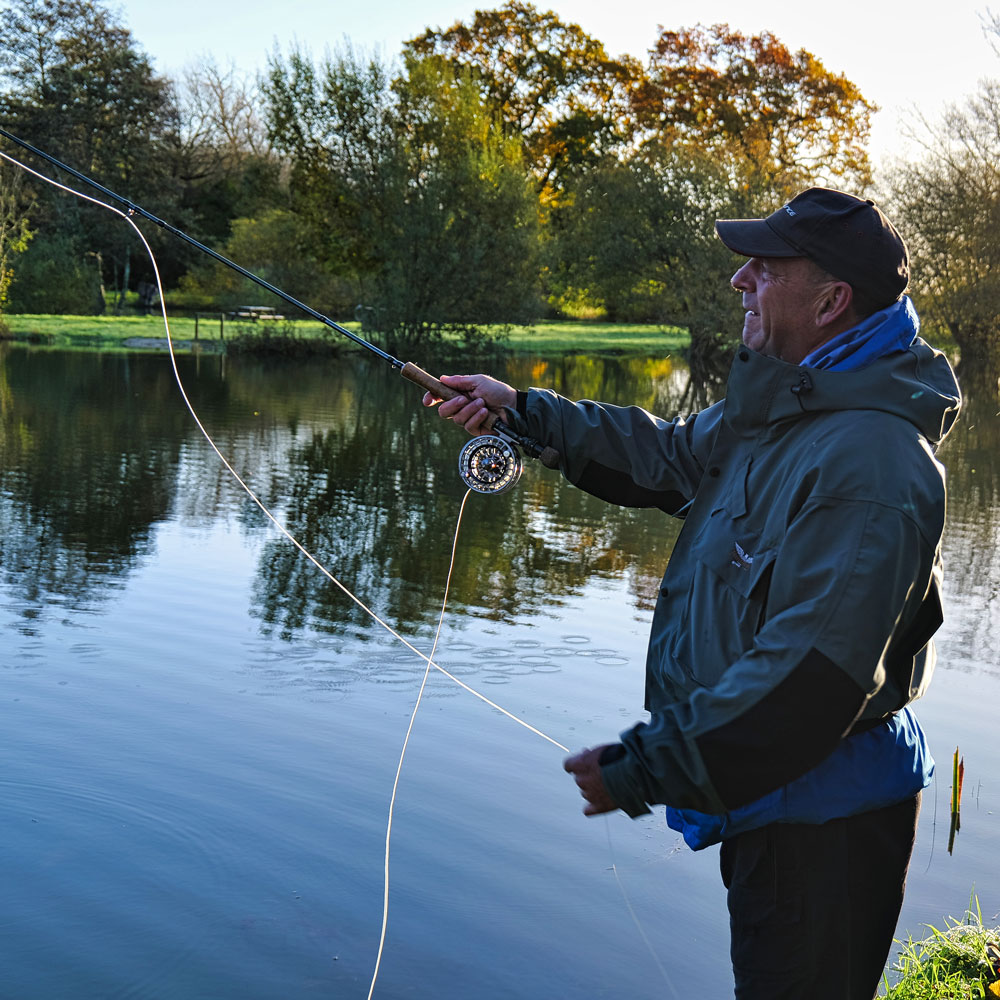
Foam Waste Winder
£0 for your first trip. £2.00 for life if going full time.
One of the best tips I have ever come up with. Maybe not the most glamorous, admittedly. But essential to any angler if you do not already have a solution.
First, why do you need something to store waste line and flies?
Simply because uncut waste line destroys wildlife. Birds can get completely tangled up and die a painful death in balls of line that have been dropped on the ground. It is horrific, trust me.
The problem is that this also applies after you have thrown it in the bin. The line will not rot down. It stays a danger for years after disposal. It is absolutely your responsibility to sort it out after use.
There are devices out there that are fiddly and just about do the job but cost a fortune. You can avoid buying anything, but it will get on your nerves when you have line sticking out your pocket. Or you can just shell out a couple of quid for a pack of these foam winders and tick a few boxes in one go.
By rolling line up loose and putting it in your pocket, you are asking for it to fall out unnoticed. It is pretty springy stuff. Best case, it just gets in the way every time you stick your hand in.
So when that inevitable tangle comes, or you have worn the leader down with some agricultural casting, wrap the line around one of these foam waste winders. There are little nip points that secure the line better, but you only really need to hit these with the last couple of turns.
The winders are small so fit in a zipped pocket easily.
And the kicker is, you are pre-preparing the line to be cut in a couple of snips when you are home. The idea being to cut it, so no section of line is longer than a couple of inches. Or you could cut the flies off and burn the line separately.
On a bad day, I might fill one of these winders up in a day’s fishing. But generally, you can leave them in your bag for a few trips.
And then I leave them heaped at home to build up and eventually spend an hour every couple of months recycling all the old flies from the previous few weeks winders. Giving them a sharpen and cutting the used line from a few foams. The foam can be re-used when it’s empty.
Coming Up Next:
You have brought together all the stuff you want to buy from these two Blogs.
Now what happens during your first actual fishing trip?
Do you need to book? What is the form with buying tickets? What would get you in trouble at the fishery that you might not realise? How do you behave around other anglers? Occasionally, it’s not all that obvious, so hopefully this will offer a few suggestions.
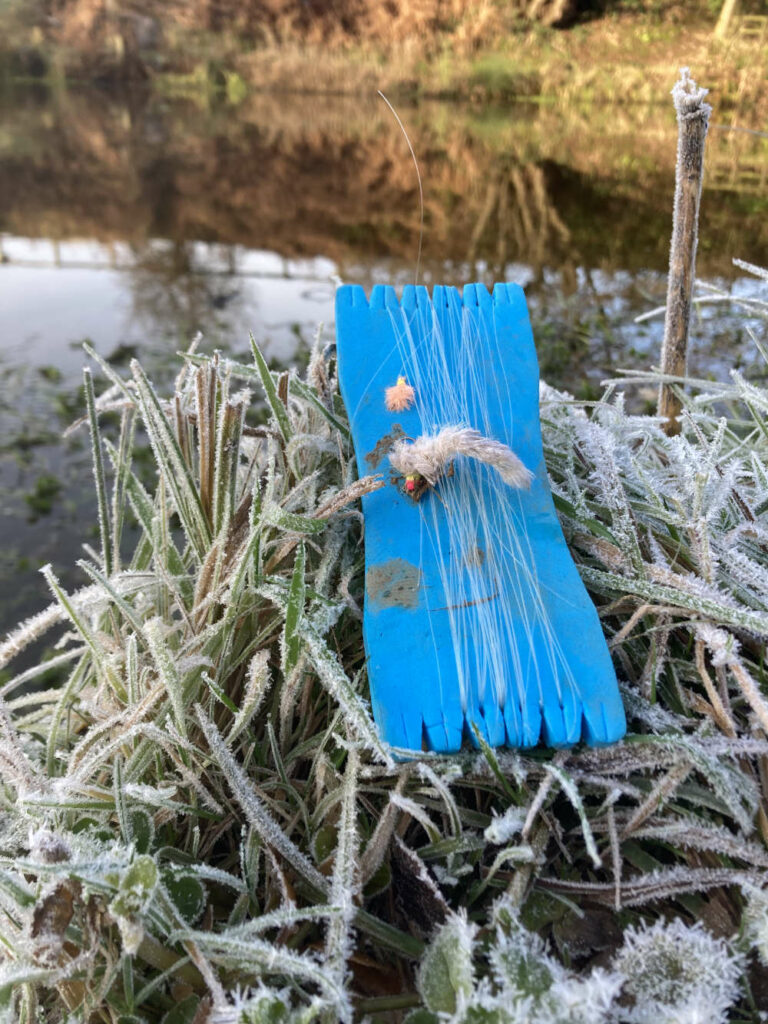
Tuition
I’ve written this series on the assumption that you are going solo on all of this, and hopefully, it’s given you something to think about before you take the leap. Go into it with half an idea of what’s coming, and you’ll find it far more enjoyable. Fly-fishing is an incredible hobby to have and will give you years of enjoyment.
You can skip all three of these blogs and just go straight into a Guided Day with an instructor. It saves buying anything, and you have someone to steer you in the right direction and save going the long way around making mistakes.
This is something I do myself, and while everyone who teaches will have a slightly different take on how to do it, it’s generally money well spent. It can fast-forward you to a decent level way quicker than you would just reading about it.
If you want to discuss a day, I am based in the North East of England and will be happy to answer any questions on how you may want to structure your day. It’s all very flexible to suit. Email me at stuartingledew@yahoo.co.uk or join Stuart Ingledew Fly Fishing on Facebook.
If you are based elsewhere, ask your local fishery for whom they recommend. Most will have a preferred list of Guides/Instructors who teach on their fishery regularly.
As a very rough guide to what you should expect from a guided day, the first thing is most will supply the tackle as part of the day’s fee. You would only need clothing to suit the weather and a pair of glasses.
For myself, I would include every bit of tackle from the rods and reels down to the flies and floatants at no extra cost.
You would have someone stood on your shoulder for the duration who could net, unhook and return the fish if that was something you were unsure of. But most of all, someone to put you right on where you are going wrong at all times. It’s a perfect way to introduce yourself to fly-fishing if you don’t want the hassle of buying a load of stuff and reading all these godforsaken blogs on how to get started.
Hope to see you on the bank soon.

